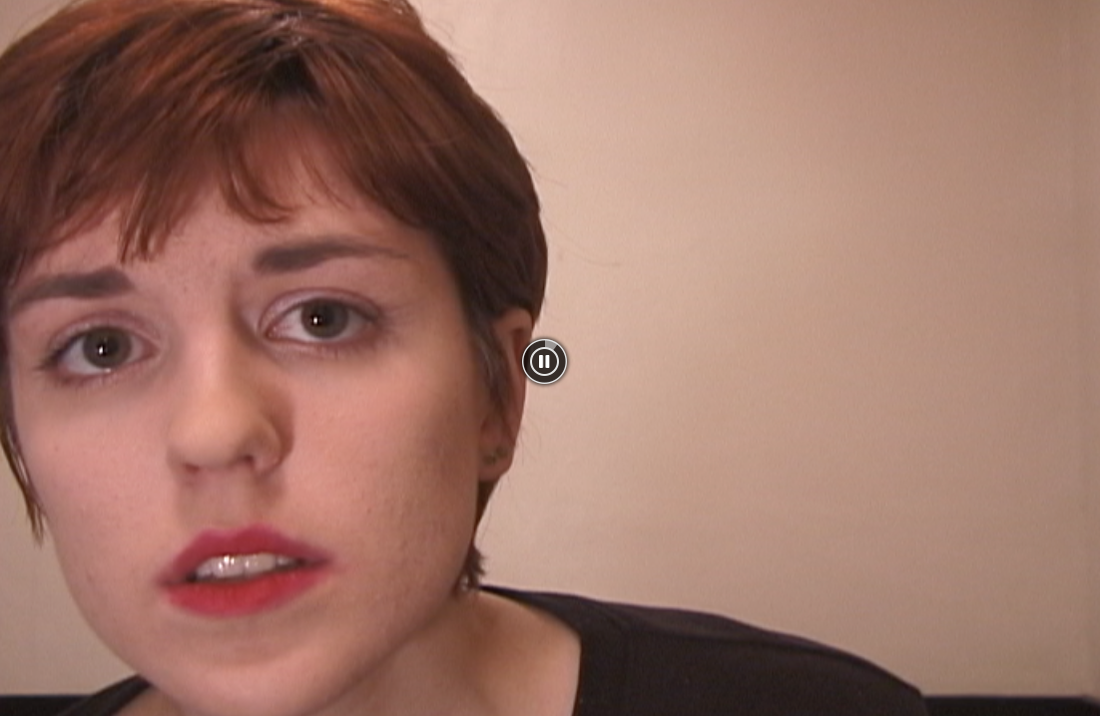|
|
Examples from the Assignment: Electronic Mirror Tanja Wittig Selene Rosenberg Natalie Roote Patrice Collins Adam Rasmus Becky Wenzlau Erin Mershon Katie Crowell Allison Wurtz Nina Castelli Nick Kessler Nora Gavin-Smyth |
Electronic Mirror
For this project you will experience an intimate minute with the camera, where the reflection in the screen/viewfinder acts like an electronic mirror and you control the camera yourself. Create an action, explore an idea, act experimentally, always acknowledging the presence of the camera as if it were another person…your audience. Try to get the event to be understood in the broader world (not just Kenyon…downplay that environment) You should think about the action being symbolic in either a serious or humorous way, as signifying action that has a beginning, middle and end. A signifying action is one that has meaning based on what your audience will understand with you subverting the original meaning or twisting the original meaning. You can use an object or two if you wish, but the main action should not be about that object, but about you, using your body as the main focus.
ALTERNATIVE: you can chose to take your minute to explore or advertise your conceptual product from the last assignment, (you could use the brochure/ object that you made but don’t have to). However, if you do this, you still need to make it unusual and experimental, compelling, unified and have a structure. You might use text or just enact something that exemplifies your product.
The piece should be well lit (remember your eyes can see more clearly in the dark than the camera, and adding light can still appear darker than you would imagine) and should have some sense of a beginning/ middle and end and should last about one minute. If you use sound, you should make sure it is clear and appropriate for your piece. There will be no editing, although you can turn the camera off and on if you wish, pause it briefly before continuing. Don’t use any special FX built into the camera…unless it is absolutely necessary for your idea (to be in B+W for instance). Ask yourself what this effect might add to the meaning of the piece, don’t use it lightly or gratuitously.
Examples: William Wegman, Sadie Benning, Vito Acconci, Ursula Hodel, Cheryl Donnegan, Ben Kinsley, Peter Nelson
Electronic Mirror
For this project you will experience an intimate minute with the camera, where the reflection in the screen/viewfinder acts like an electronic mirror and you control the camera yourself. Create an action, explore an idea, act experimentally, always acknowledging the presence of the camera as if it were another person…your audience. Try to get the event to be understood in the broader world (not just Kenyon…downplay that environment) You should think about the action being symbolic in either a serious or humorous way, as signifying action that has a beginning, middle and end. A signifying action is one that has meaning based on what your audience will understand with you subverting the original meaning or twisting the original meaning. You can use an object or two if you wish, but the main action should not be about that object, but about you, using your body as the main focus.
ALTERNATIVE: you can chose to take your minute to explore or advertise your conceptual product from the last assignment, (you could use the brochure/ object that you made but don’t have to). However, if you do this, you still need to make it unusual and experimental, compelling, unified and have a structure. You might use text or just enact something that exemplifies your product.
The piece should be well lit (remember your eyes can see more clearly in the dark than the camera, and adding light can still appear darker than you would imagine) and should have some sense of a beginning/ middle and end and should last about one minute. If you use sound, you should make sure it is clear and appropriate for your piece. There will be no editing, although you can turn the camera off and on if you wish, pause it briefly before continuing. Don’t use any special FX built into the camera…unless it is absolutely necessary for your idea (to be in B+W for instance). Ask yourself what this effect might add to the meaning of the piece, don’t use it lightly or gratuitously.
Examples: William Wegman, Sadie Benning, Vito Acconci, Ursula Hodel, Cheryl Donnegan, Ben Kinsley, Peter Nelson
